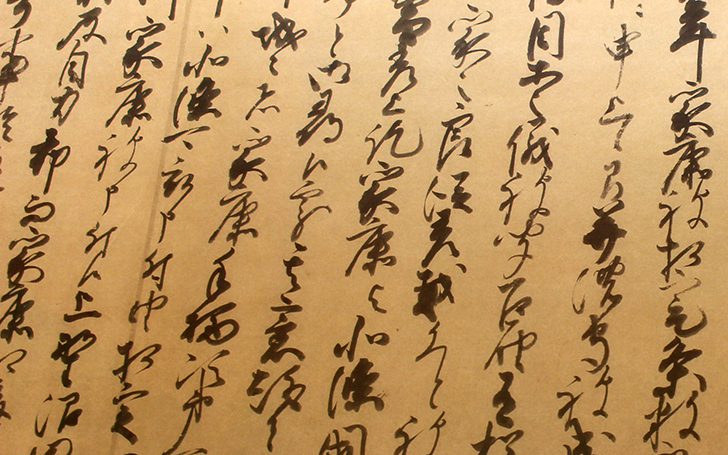57英語で説明したい日本1陶磁器

日本語訳載せときます。
陶磁器
陶磁器は土を練り固め焼いて作ったものの総称です。
陶磁器とは広義には土器・炻器・陶器・磁器に分かれます。
縄文時代の土器から始まり、5世紀ごろの須恵器という炻器、中世以降の釉薬をかけた陶器へと派生していきます。日本の磁器については17世紀の有田がはじまりといわれています。
狭義の陶器と磁器の違いは二つあります。一つ目は材料が陶器が粘土であるのに対し磁器は陶石を砕いたものです。二つ目は磁器は陶器より高温で焼かれます。
高温で焼くことにより磁器はガラスの成分が素地の隙間を埋めます。一方陶器は素地の隙間が大きいので空気が入りやすいです。磁器は熱しやすく冷めやすいのでコーヒーカップなどに用いられます。一方陶器は一度熱すると冷めにくいため土鍋などに用いられます。
日本各地に陶磁器の産地があります。陶磁器についての英語の本や、名古屋など各地に陶磁器の美術館があります。また各地で陶芸体験も出来ます。ぜひ陶磁器を見たり作ったり買って楽しんで下さい。
作ったタイピングゲームの一覧はこちらです。
https://typing.twi1.me/profile/userId/113751
あとブログのURLは下記に。関連記事と動画があるのでよろしければご覧下さい。英語ニュース以外もあります。
http://okakyutaro.blog.fc2.com/
| 順位 | 名前 | スコア | 称号 | 打鍵/秒 | 正誤率 | 時間(秒) | 打鍵数 | ミス | 問題 | 日付 |
|---|---|---|---|---|---|---|---|---|---|---|
| 1 | りく | 4959 | B | 5.0 | 97.5% | 245.4 | 1249 | 32 | 17 | 2025/12/03 |
関連タイピング
-
めっちゃいい曲....
プレイ回数2.7万歌詞かな200打 -
オーバーライド 重音テト
プレイ回数16万歌詞かな208打 -
何秒で全部打てるか挑戦してみよう!
プレイ回数433万短文かな298打 -
テトリスサビ!!!!!!!!!!!!!!!!!!
プレイ回数13万歌詞かな167打 -
長文
プレイ回数1.4万長文120秒 -
プレイ回数6.4万かな391打
-
速ければ速いほど強い世界
プレイ回数790万短文かな87打 -
簡単な短文タイピングです。
プレイ回数18万かな60秒
問題文
(Ceramics)
Ceramics
(Ceramics is a general term for items made by kneading and hardening clay.)
Ceramics is a general term for items made by kneading and hardening clay.
(Ceramics are broadly divided into earthenware, stoneware, pottery, and porcelain.)
Ceramics are broadly divided into earthenware, stoneware, pottery, and porcelain.
(It started with earthenware from the Jomon period,)
It started with earthenware from the Jomon period,
(followed by stoneware called Sueki around the 5th century, and glazed pottery after the Middle Ages.)
followed by stoneware called Sueki around the 5th century, and glazed pottery after the Middle Ages.
(Japanese porcelain is said to have originated in Arita in the 17th century.)
Japanese porcelain is said to have originated in Arita in the 17th century.
(There are two differences between pottery and porcelain in the narrow sense.)
There are two differences between pottery and porcelain in the narrow sense.
(The first is that porcelain is crushed pottery stone while pottery is made of clay.)
The first is that porcelain is crushed pottery stone while pottery is made of clay.
(Second, porcelain is fired at a higher temperature than pottery.)
Second, porcelain is fired at a higher temperature than pottery.
(By firing at a high temperature, porcelain fills the gaps in the base material with the glass component.)
By firing at a high temperature, porcelain fills the gaps in the base material with the glass component.
(On the other hand, pottery has large gaps between the substrates, so it is easy for air to enter.)
On the other hand, pottery has large gaps between the substrates, so it is easy for air to enter.
(Porcelain is easy to heat and cool, so it is used for coffee cups.)
Porcelain is easy to heat and cool, so it is used for coffee cups.
(On the other hand, once heated, pottery does not cool down easily, so it is used for clay pots.)
On the other hand, once heated, pottery does not cool down easily, so it is used for clay pots.
(There are ceramic production areas in various parts of Japan such as Saga and Gifu.)
There are ceramic production areas in various parts of Japan such as Saga and Gifu.
(There are English books about ceramics and ceramic museums in various places such as Nagoya.)
There are English books about ceramics and ceramic museums in various places such as Nagoya.
(You can also experience pottery in various places.)
You can also experience pottery in various places.
(Please enjoy watching, making and buying ceramics.)
Please enjoy watching, making and buying ceramics.








